FADE IN:
1. EXT. 35.9078° N, 127.7669° E – MIDDAY
CHARACTER 1, walks with light steps. Occasionally she breaks her demure posture with sharp and piercing glances when observing brisk changes in her surroundings. Wears a matching suit made out of soft cotton, in an unspecified colour that blends into any setting she finds herself in. Holds a peculiar set of tools in her hand that when touched produce a soft sound.
By now she has adjusted to the humidity, at least mentally. Anyone willing to concentrate for a moment can learn how to breathe through the skin and how to regulate the moisture levels of their body. But sometimes she gets carried away, and this quickly exhausts her body. Her skin is still learning how to adjust to the sudden outbursts of heat and the drastic changes in temperature. At times the pores of her dermis shrink, making breathing difficult, and at other times the porosity of her skin lets all the water escape to the surface, drying her from the inside out. She will have to understand how to control this absorptive quality soon if she wants to continue her work. It is not a difficult task that she has to perform. It is simple work, but it helps the inhabitants plan their day-to-day activities. Every day she walks through the same neighbourhood and notes the moisture levels, writes down the direction of the wind, traces the shadows and measures the intensity of the sun. Before she was born, no one had to do this task manually. People didn’t bother thinking about atmospheric changes because everything was cybernated. As people moved between indoor and outdoor spaces the temperature and moisture adjusted automatically. Food storage compartments recognised the type of food being storedand immediately created the perfect conditions for protecting its nutrients and extending its shelf life. Now that energy is scarce it is only used for running the remaining hearts of territories. Thus from an early age, the dwellers here develop different skills. Using their bodies, coalescing into collective bodies, as a proxy for the crashed algorithms. It is challenging for self-reliant individuals to survive on their own. Those territories where the disintegration of communities is most advanced and where individuals live detached from one another are affected by the crises the most. When everything paused during the prolonged witching hour the dynamism shifted towards the edges of territories. The pulsating heart is not in the centre of the body, but at the tips of the fingers, drawing life from the lives they have touched.
CUT TO:
1. EXT. 35.9078° N, 127.7669° E – MIDDAY
CHARACTER 1, walks with light steps. Occasionally she breaks her demure posture with sharp and piercing glances when observing brisk changes in her surroundings. Wears a matching suit made out of soft cotton, in an unspecified colour that blends into any setting she finds herself in. Holds a peculiar set of tools in her hand that when touched produce a soft sound.
By now she has adjusted to the humidity, at least mentally. Anyone willing to concentrate for a moment can learn how to breathe through the skin and how to regulate the moisture levels of their body. But sometimes she gets carried away, and this quickly exhausts her body. Her skin is still learning how to adjust to the sudden outbursts of heat and the drastic changes in temperature. At times the pores of her dermis shrink, making breathing difficult, and at other times the porosity of her skin lets all the water escape to the surface, drying her from the inside out. She will have to understand how to control this absorptive quality soon if she wants to continue her work. It is not a difficult task that she has to perform. It is simple work, but it helps the inhabitants plan their day-to-day activities. Every day she walks through the same neighbourhood and notes the moisture levels, writes down the direction of the wind, traces the shadows and measures the intensity of the sun. Before she was born, no one had to do this task manually. People didn’t bother thinking about atmospheric changes because everything was cybernated. As people moved between indoor and outdoor spaces the temperature and moisture adjusted automatically. Food storage compartments recognised the type of food being storedand immediately created the perfect conditions for protecting its nutrients and extending its shelf life. Now that energy is scarce it is only used for running the remaining hearts of territories. Thus from an early age, the dwellers here develop different skills. Using their bodies, coalescing into collective bodies, as a proxy for the crashed algorithms. It is challenging for self-reliant individuals to survive on their own. Those territories where the disintegration of communities is most advanced and where individuals live detached from one another are affected by the crises the most. When everything paused during the prolonged witching hour the dynamism shifted towards the edges of territories. The pulsating heart is not in the centre of the body, but at the tips of the fingers, drawing life from the lives they have touched.
CUT TO:
Excerpt from Resonance of a Breathing Bowl - a publication that is an outcome of curatorial research developed by Suns and Stars. Guided by Sojung Jun's artistic practice, her short films Poem of Fire (2015) and Something Red (2010), and by the voices of non-human and human beings, the film-script-like book is a way to engage in thinking about how we can instill the knowledge of a breathing bowl and fermentation processes to teach us about becoming bodies that recognize the value of being absorptive and receptive.
The trilingual physical publication is printed in an eddition of 250 copies, and includes translations into three languages Korean (tran. by Hyeisoo Kim), Dutch (tran. Marjoca de Greef) and English (Anastasija Pandilovska).
The publication includes an interview with Sojung Jun.
The trilingual physical publication is printed in an eddition of 250 copies, and includes translations into three languages Korean (tran. by Hyeisoo Kim), Dutch (tran. Marjoca de Greef) and English (Anastasija Pandilovska).
The publication includes an interview with Sojung Jun.
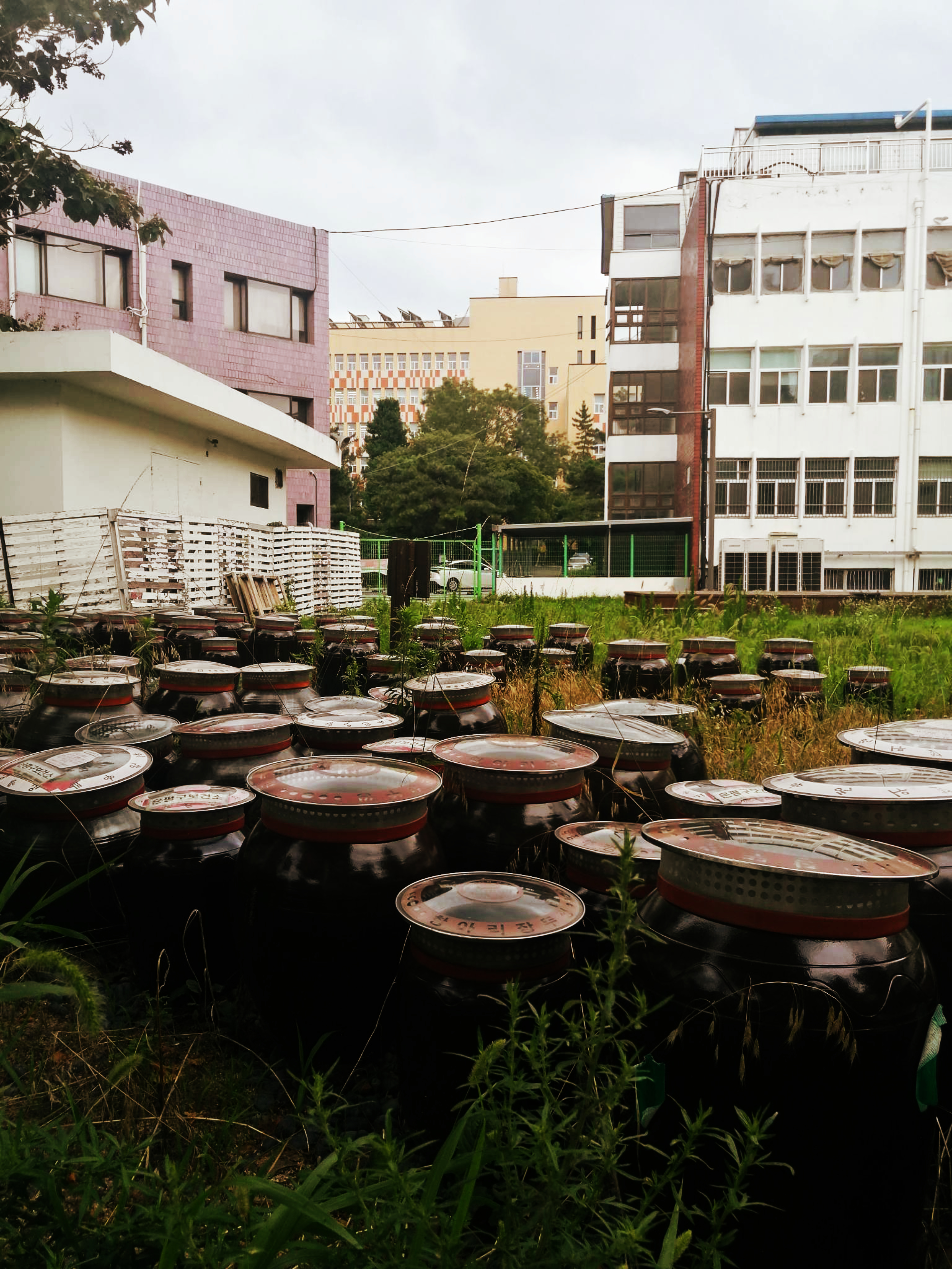
She sips water while walking up a hilly street. The moisture that escapes her body sits on the surface of her skin. Forming tiny drops, it resembles the morning dew that shimmers over the green leaves of ancestral plants. The drops slide down her arms and are absorbed into the piece of fabric that touches her arms. Others reach the ground, tracing the route she walks daily. She takes a few more sips. Standing at marked spots, she stretches her arm into the air and moves her hand in distinctive movements, as if she were being guided by an invisible drawing. She notes that today the wind is blowing from the south. Yesterday, the wind was coming from the southeast and was much gentler. It is a small change, yet the synchronisation of these elements is important for keeping the inhabitants nurtured and fed. She turns her gaze to the elongated shadow of a building. The shadow partially covers a flat area occupied by rounded, brown earthenware vessels, which in the light reveal warm reddish undertones. In this landscape, these vessels are referred to as 옹기 (Onggi).
She smells rain in the wind. Her job for the day is done and she walks home. She passes large objects void of images. Worn out by inactivity. Exposed to the salts in the air, their smooth surfaces have crystallised, dispersing only the sunlight as reminders of the past.
FADE OUT.
FADE IN:
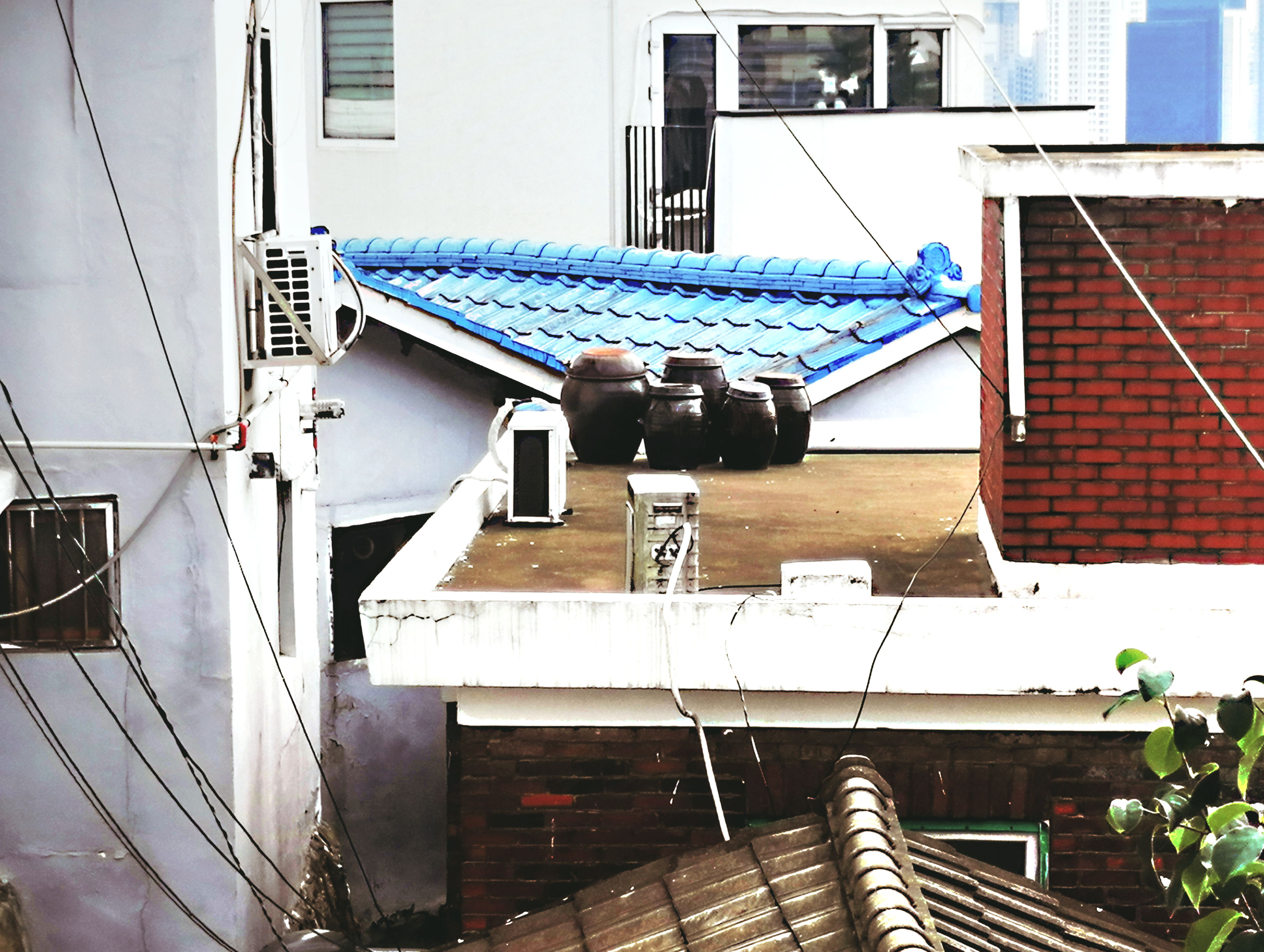
2. EXT. 37.5665° N, 126.9780° E – CONGESTED CITY VIEW – MORNING
CHARACTER 2 is a newcomer, trying to discover the common way of life in this new city in which she will stay for a while. Every morning she looks out of the window. This vantage point is a home within a home to her. With this view, she is reminded of the hard-bitten past of her birthplace. Yet she also meets the ghosts who drift around in the hidden alleys and transplant knowledge about this place into her.
She leaves her house in a hurry and manages to jump into the subway moments before the door closes. As the train gains speed, she catches her breath and composes her posture. Soon she arrives at the destination. She climbs the stairs. There isn’t anywhere specific she needs to be, but she moves as if there were a goal to be achieved. For a moment she thinks that she is circling in one place, but then realises that the brownish-red earthen vessels which she so naively took as a reference point for her walk stand on all the flat roofs. She continues walking and quickly reaches a dead end. The road leads to a backyard in which a grandmother is standing near several Onggi vessels. The earthenware is arranged on the patio in a kind of constellation, with a specific distance between each pot, not in the corner of the yard, but also not precisely in the middle. The grandmother notices her and waves her in.
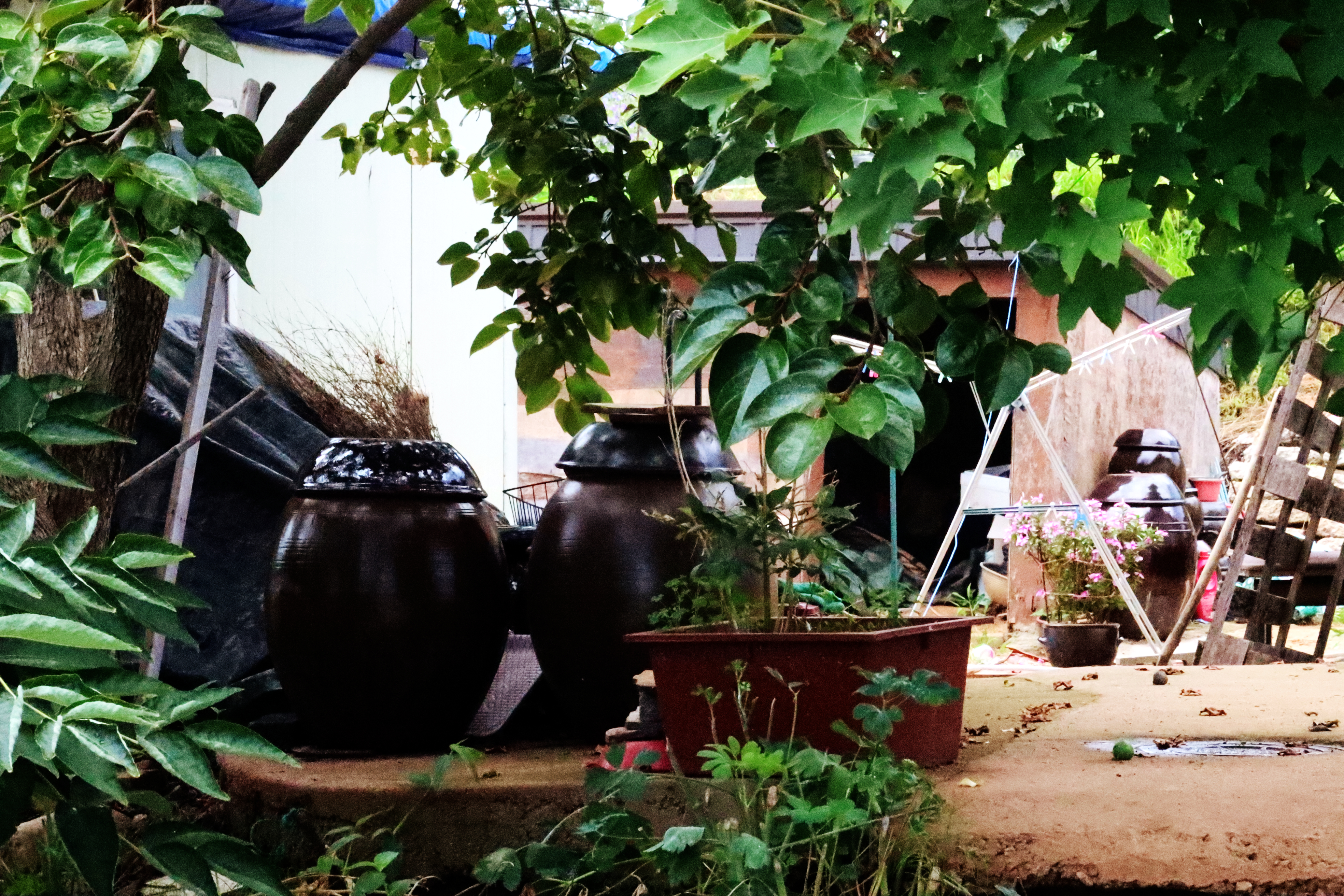
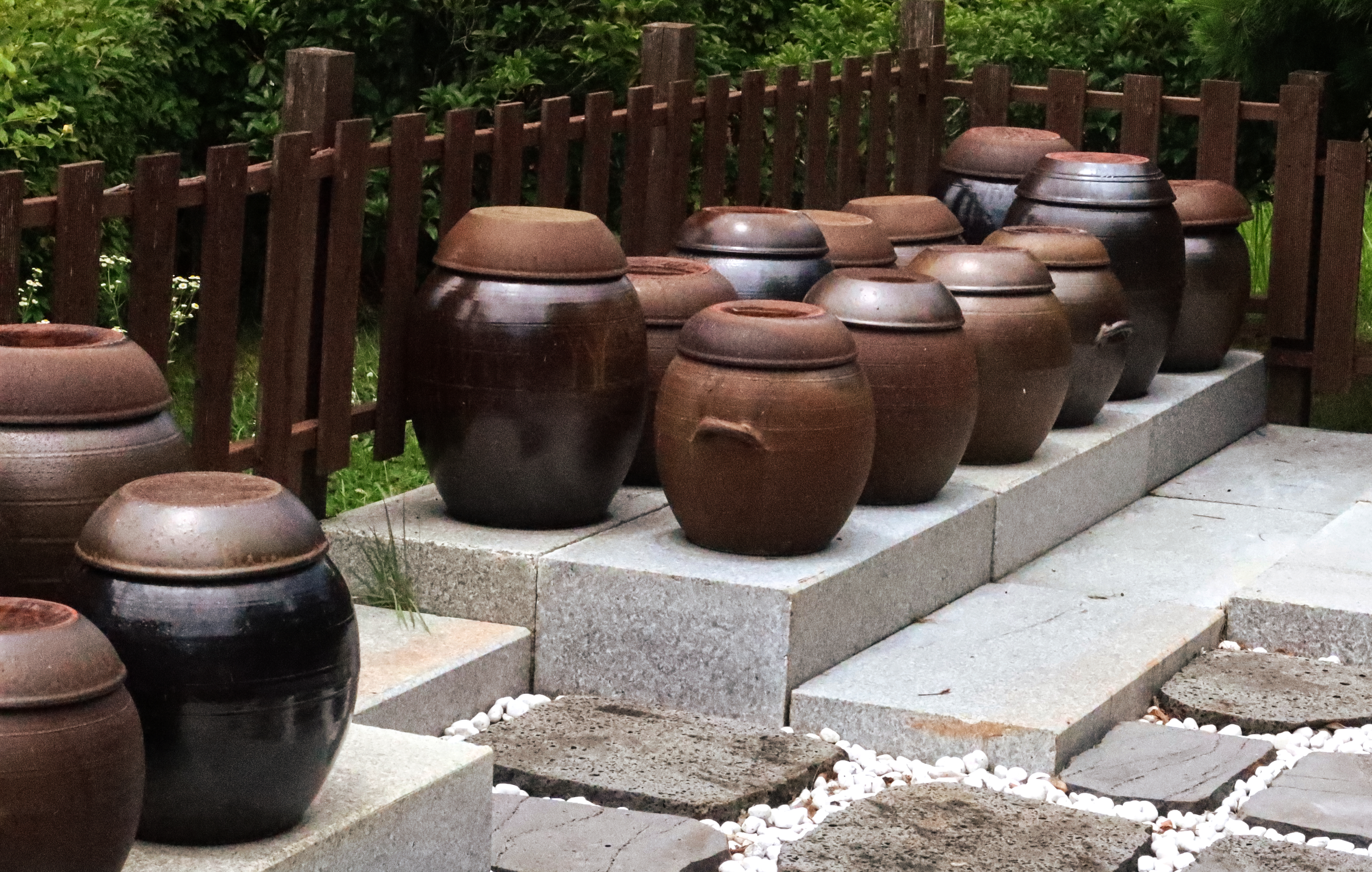
THE GRANDMOTHER, fragility combined with endurance. Silver hair frames her caring face. Her hands have touched bliss and worries. Humming a resonating song, she polishes the large earthenware with a soft fabric. It is her daily ritual, whispering healing songs that permeate the fermented foods she prepares year after year.
The Grandmother gently takes Character 2’s hands into her own. Two languages entangled into a stirring conversation. Hands and arms are at work. Trying to describe the relevance of the wind and the sun for the preservation and fermentation of the food she makes, the Grandmother moves her hands in the form of an intuitive dance.
CUT TO:
Suddenly she lifts the lid from one of the pots and reveals what is hidden inside. The dark liquid appears like a shadow, making the vessel seem boundless. The Grandmother gestures towards the Onggi and shows Character 2 how to use her little finger to taste the liquid. She copies the movement and samples the complex taste, which seems familiar yet very special. An atom of ancestral stories preserved in a drop of deep savoury liquid. They don’t know each other’s names, but they feel as if they were dear friends. The Grandmother opens a few more lids and together they look at the various colours and scents of sugars being slowly broken down by good bacteria. The Grandmother utters 손 맛 (sson mhat); she says 손 and points towards her hand and then adds 맛 while making the familiar noise many people make when food is tasty. The character of the kimchi is infused with all the emotions gathered in her hands, the memory of holding her mother’s hand, of caressing the dark soft hair of a loved one, of cold earth passing through her fingers.
CUT TO:
The Grandmother folds her body into a deep squat and Character 2 copies the movement. She feels her whole body stretching and adjusting to this new posture. The Grandmother tells her how food preservation is a yearly ritual performed in the month of November. People sitting together, year in, year out, a faint itch from the saltiness absorbing into the skin, minerals reuniting with fibres. Communal hands folding in, wrapping nutrients of delicate plants never meant to survive the winter.
She now understands why the food here is different every time. Why since her arrival she feels good and her nightmares have disappeared. Absorbing into her cells, the ferments sang to her restorative songs of care. Consuming the lethal instead of her and instilling in her only what she can use as a source of nourishment.
The Grandmother says farewell to her and continues with her daily ritual, polishing the Onggi. Character 2 smiles back.
FADE OUT.
FADE IN:
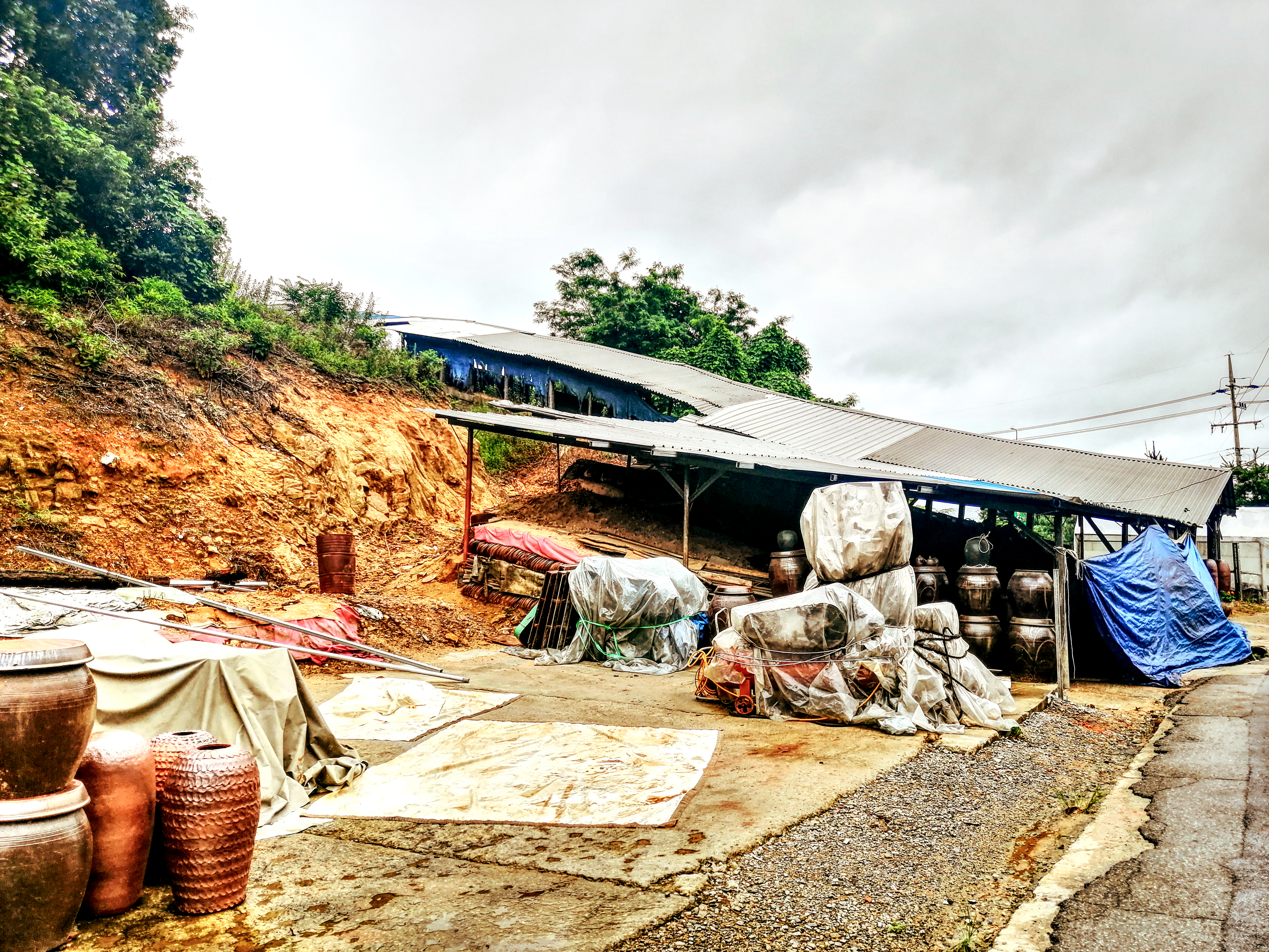
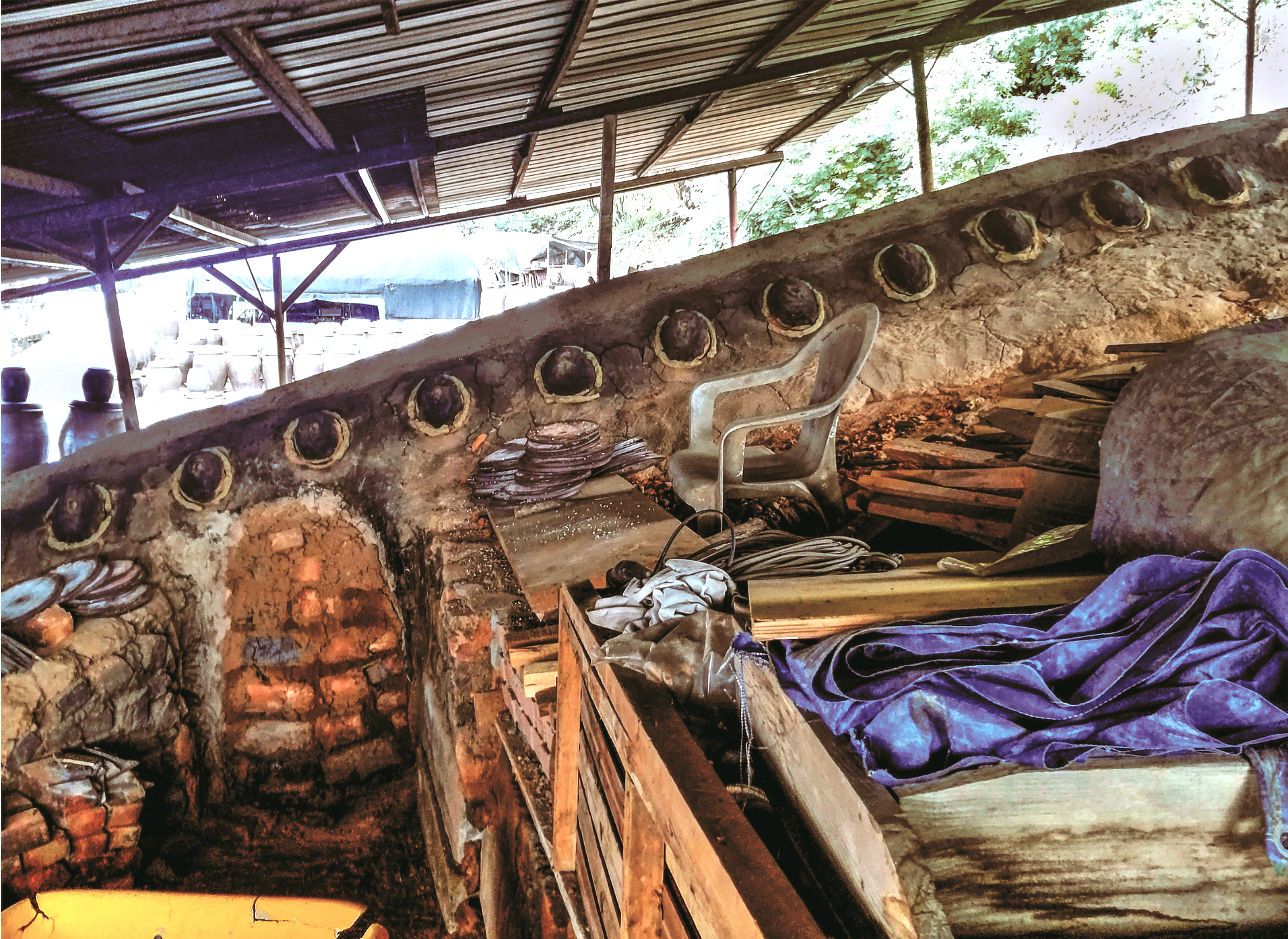
3 . EXT. OPEN VIEW OF GREEN FIELDS – OLD BUS STOP – RAINY AFTERNOON
Character 2 steps out of a bus. Her foot sinks into a puddle of light-brown clay. It is wet everywhere, for it rains a lot these days. She knows it is the right place without even looking at the map she prepared in case she got lost. She looks at the bare road covered in clay mixed with small stones, which give a good grip to the foot. It leads towards the base of the mountain. She reaches the entrance to the place where Onggi are made. She thinks of the Grandmother and the stories she told her: how long ago people hid and found shelter in the interior of these breathing bowls. The way the earthenware allowed communities to live unnoticed in the forests and how, when the rupture was writing itself into the history of this landscape people crowded the areas where Onggi were made. Writing the gathering of energy, of people pouring knowledge into each other, of stirring earth which preserved communities, writing the settling space for and of the unsettled.
The image disappears as she hears someone calling her. It is an unknown figure dressed in clothes made of fabric whose fibres have soaked up the iron-rich clay. Becoming an extension of the landscape. The person is one of the 옹기장 (Onggijang) – people who carry on the knowledge of making Onggi. They walk towards an area where people are sitting together. She notices more people like her, who were shaped by different landscapes and have come here to learn about the breathing bowls.
She came here for a different reason, but ever since she met the Grandmother she has been interested in the earthenware that could sustain communities and entire cities without being hooked to an electric cable. The landscape she came from, like many others, has been facing extreme challenges for a long time. It is real chaos. Immersed in an automated way of living, with power supplies being cut and skilled people being de-skilled, taught to only work with a clock guarding their process, when the factory line stopped moving, either the food went to waste or it became limited. Used to a plethora and overproduction of products, people watched their food boiling in mould in the inoperative coolers as the sounds of growling stomachs and signs of fatigue spread across landscapes. Worlds in crisis, clutching on to the last residues of life sustained in spaces carved out by communities.
CUT TO:
ONGGIJANG
It is about borrowing, not extracting! Borrowing carries the responsibility of returning what has been borrowed. Extraction is a forceful task, weaponised by people to squeeze the life out of places. Unhindered by the fallout that suffocates the fragile and the aftereffects that silently continue to corrupt the immunity of communities, it is the absence of matter, of species, of elements touching, that will make “us” hold our tongues. We have to wait silently for the rainwater to bring the iron-rich clay to the foothills. Honouring the remains of the living organisms which, pulverised into fine particles, continue to exist as parts of Onggi.
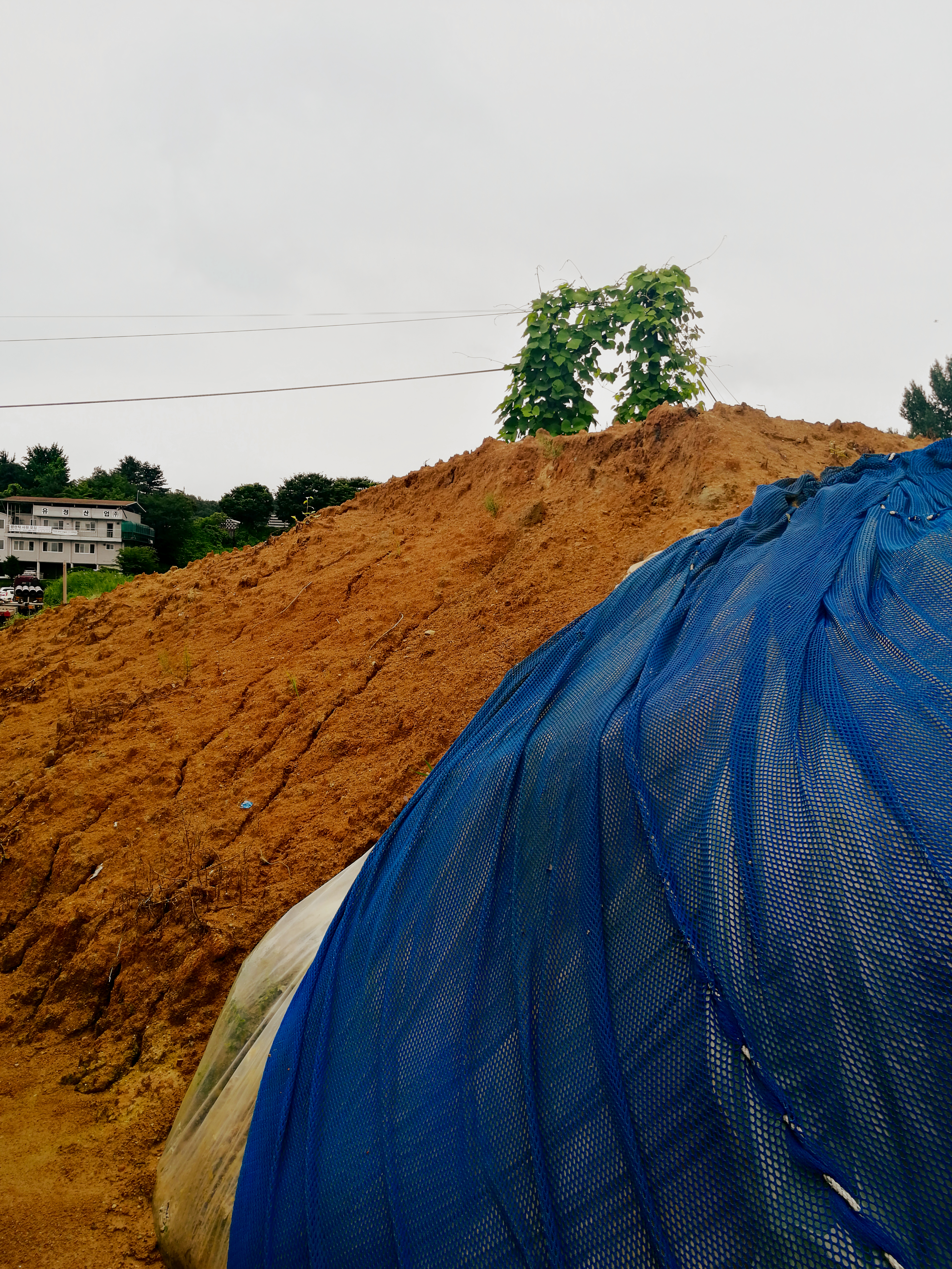
CUT TO:
Winds blow from the west. Moving the damp towel used for polishing the Onggi brings the fear of powers flooding in, harvesting the knowledge before honouring the ancestors who unearthed the earth’s ability to preserve. Restlessness comes with the anticipation of the expropriation of land, experience, and knowledge in times of planetary crises. “It will be for the common good and wellbeing,” they say, but soon years of communal learning are being exploited for the comfort and profit of very few people. The bones remember when communities were left bare, cut off from their lifelines. But the Onggijang are observant and wise to nurture a skill that asks for patience and humility. Qualities that naturally do not conform to a hold that leaves lives breathless. To be able to make Onggi you need to also know how to craft your own tools out of pine wood and sense the moisture in the clay with your own skin. To exercise borrowing. Returning. To turn the dead and rotting leaves found at the foothill of the mountain into a coating for the Onggi. Because only a glaze made out of fermented leaves enables the vessels to breathe. To exhale.
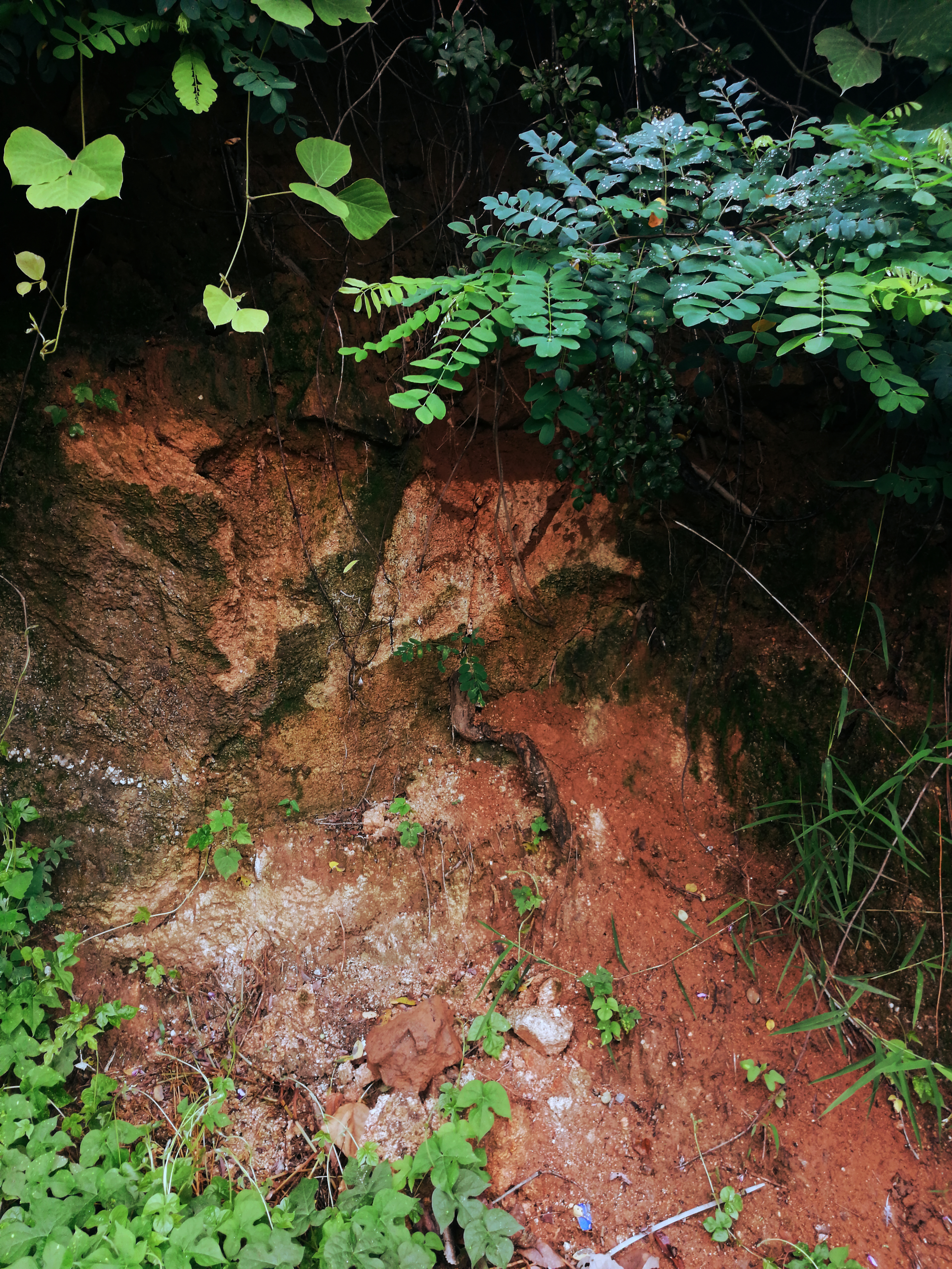
CUT TO:
She sits down for a moment, taking a breath in the company of heaps of freshly collected clay. She realises that the breathing bowls are supported by vitalities touching. Refusing to be owned, to be interiority without relation, Onggi insists on remaining a territory where organisms merge and flow through each other. A not-object that is also a social space of offering and preserving, allowing to be affected by things, affecting things.
CUT TO:
She notices a new figure standing near her. Character 1 has just finished her daily task, and knowing that wet days are not the best for firing Onggi, she came to tell the Onggijang that the rain will continue for a few more days.
FADE OUT.
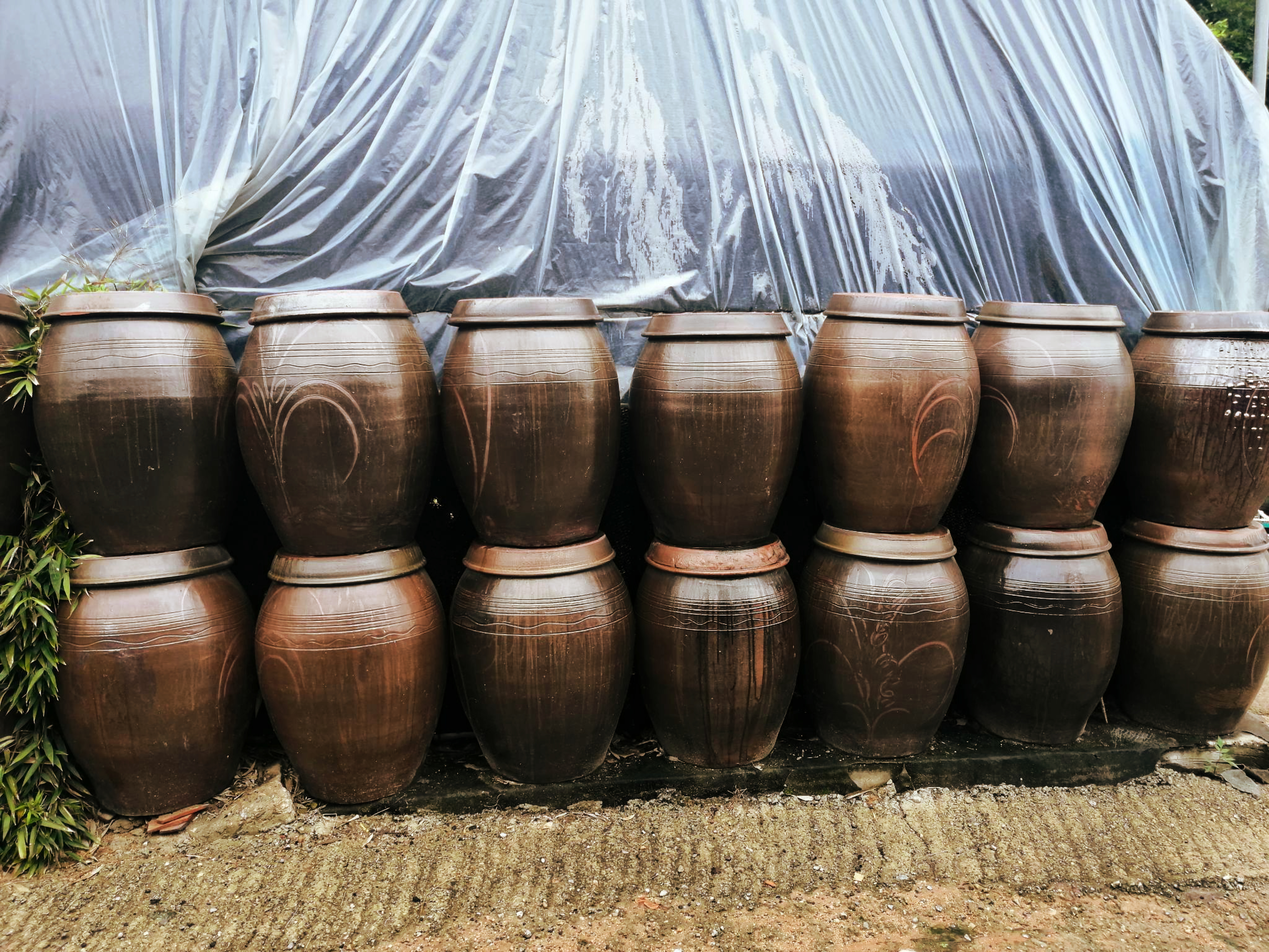
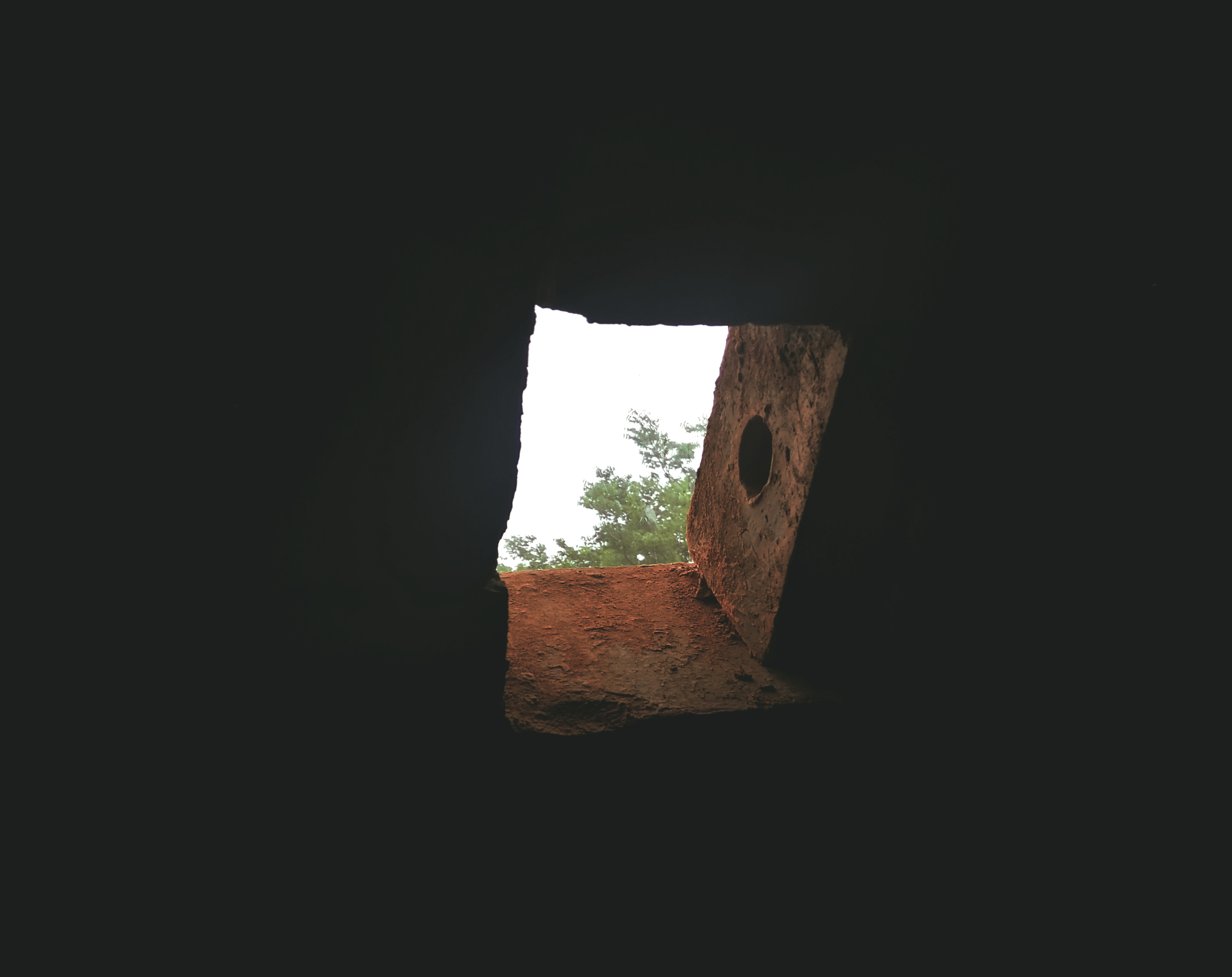
All images have been made during an extended research period in South Korea.
Resonance of a Breathing Bowl is developed in the context of the Arts Joint Fund Programme initiated by DutchCulture and Arts Council Korea - ARKO on the occasion of the 60th anniversary of the diplomatic relations between The Netherlands and South Korea.
Resonance of a Breathing Bowl is made possible with the generous support from the Embassy of the Kingdom of the Netherlands in South Korea and DutchCulture.

